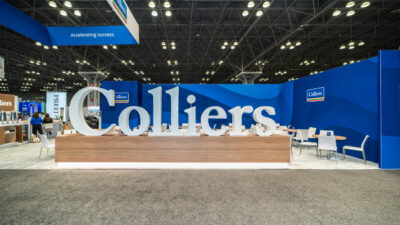“In order to be irreplaceable, one must always be different.” – Coco Chanel
Today’s path to purchase is a composite of gateways, both on and offline, enticing shoppers to spend. Brands have already witnessed the major influence that social media has had on shopping trends. According to Sprout Social, 74% of shoppers make buying decisions based on social media, and it’s unlikely that this number will decrease anytime soon. American Millennials in particular learn about luxury brands and high-end fashion via social media (23%) most, over traditional outlets like glossy magazines (14%), celebrities (13%), friends and family (12%) or other influential mediums.
Social media represents high stakes for the luxury fashion market. Although once shunned by the elitist brands as ‘mass market,’ social media has now become the marketing tool of choice. Luxury brands are stepping outside of their comfort zone to forge authentic connections with their consumer base, particularly with younger millennials and the Generation Z demographic.
Chanel and Louis Vuitton ranked highest on WWD’s Top Fashion Brands on Social, eloquently strategic in their innovation toward embracing social media while staying true to their brand. In Chanel’s case, the brand has a combined reach of 63.9 million followers across Facebook, Instagram and Twitter, and as if to reiterate the prestige of their legacy, they only follow their brand, Chanel Beauty.
According to Deloitte, millennials and Generation Z are expected to represent more than 40% of the overall luxury goods market by 2025. One constant that drives their in-store purchases is a high-value, stylized and customized shopping experience. Another is their consumption of video: 80% of millennials watch online video during the consideration phase of the buyer’s journey. Luxury brands must calculate how they leverage their content to introduce their offerings to new audiences. Chanel’s approach incorporates the experience into a compelling landing page with a video timeline to depict its origin story through a series of short films.
If I could find a real-life place that’d make me feel like Tiffany’s…
Trailblazers in the luxury retail market have paved the way for mid-tier brands to provide concierge-like services that are most appreciated by affluent shoppers. And there is no better example than the white glove experience supplied by Tiffany & Co. Even if you’ve never stepped inside one of their 64 retail stores, the style and elegance that the Tiffany Blue Box™ represents undoubtedly precedes itself, as well as its 180-year legacy of quality craftsmanship in jewelry design.
In recent years though, Tiffany’s — much like its contemporaries — has had to revolutionize their approach in embracing this new breed of multigenerational shoppers. Since the company hired Alessandro Bogliolo as their new CEO las year, Tiffany’s has been actively implementing a six-point plan to revitalize the brand and enhance the customer experience to ultimately attract a younger audience. After all, that’s what millennials and Generation Z want: 26% of them prefer shopping in-store for the sensory experience of touching, feeling and of course, trying on merchandise. And Bogliolo is listening, starting Tiffany’s reinvention plan with an online campaign that appeals to the visual and aspirational desires of the new generation. The campaign, appropriately named Believe in Dreams, will launch Tiffany’s Paper Flowers collection where they’ve partnered with Spotify to release a reimagined version of the classic “Moon River” featuring Elle Fanning and hip-hop artist A$AP Ferg on vocals. In the movie Breakfast at Tiffany’s, Holly Golightly declares that “the only thing that does any good is to jump in a cab and go to Tiffany’s.” Nowadays you can do so much more when you get there. Visitors can browse the latest collections on display, make a reservation for tea at The Blue Box Cafe and for the posher clientele, schedule an appointment at the Tiffany Salon, a private showroom to procure custom jewelry designs.
Tiffany’s is a company worth its weight in diamonds
Nearly a year later, Bogliolo’s efforts seem to be working, as the luxury brand saw a 32% increase in stock valuation this quarter with its stock price is holding steady. In addition to these experiential concepts, Tiffany & Co.’s longstanding commitment to affecting positive change beyond its business is sure to woo millennials who lean into brands with purpose. Their recent Sustainability Report highlights efforts to promote responsible mining, combat climate change and publicly advocate to empower women in both the workplace and marketplace.
Bogliolo is reported to have said that Tiffany’s is in the business of surprising their customers, and he has a long list of projects planned in the coming year. One new endeavor involves the company’s real estate offering. Capitalizing on Nike’s recent exit from their flagship building next door, Tiffany’s will take over the space to deepen their footprint on New York’s gold coast. This will expand retail operations onto 57th street and upward into the Tiffany Building with the introduction of a state of the artisanal workshop to explore innovations in design and technology to craft jewelry. There are also plans to expand Tiffany’s reach globally: the company recently announced plans to enter emerging markets in China, Russia, India, Brazil and the Middle East.
Tiffany’s sure has come a long way from its little emporium on the corner of Broadway and Warren Street. An invested landlord on prestigious Fifth Avenue, the innovators have changed guard but continue to build the legacy empire worthy of the Tiffany Blue Box and its loyal customers, always with an eye on the future.
What are your online shopping habits? Do video and creative social media promotions influence your decisions? Email me to let me know, or better yet, follow me on Twitter for regular updates and musings about commercial real estate and the retail industry.
Anjee continues to be an insatiable enthusiast of all things retail. She’s a student of culture with a pulse on future shoppers and the fleeting trends constantly changing the retail landscape…driving retailers, landlords and developers crazy!

 Anjee Solanki
Anjee Solanki
 Nicole Larson
Nicole Larson
